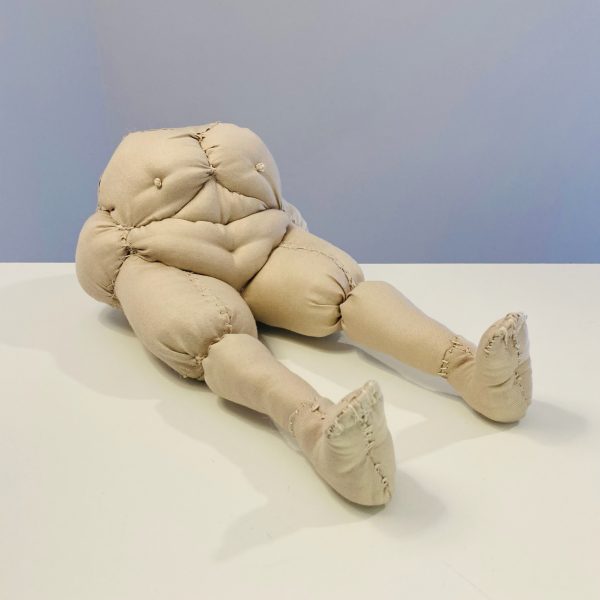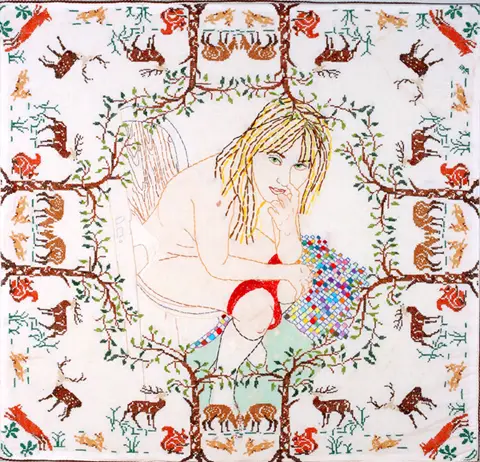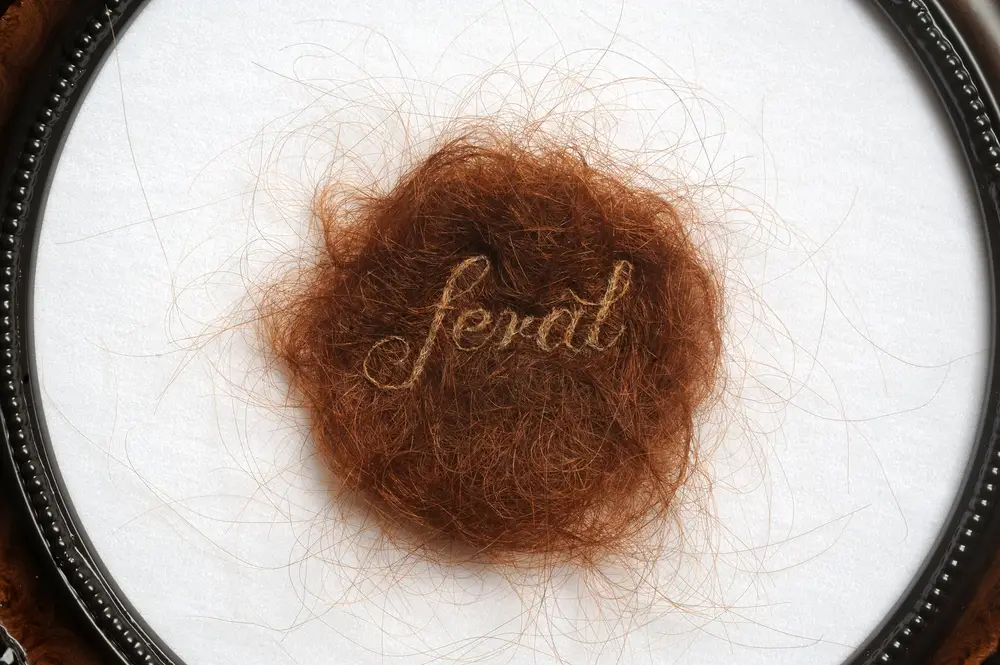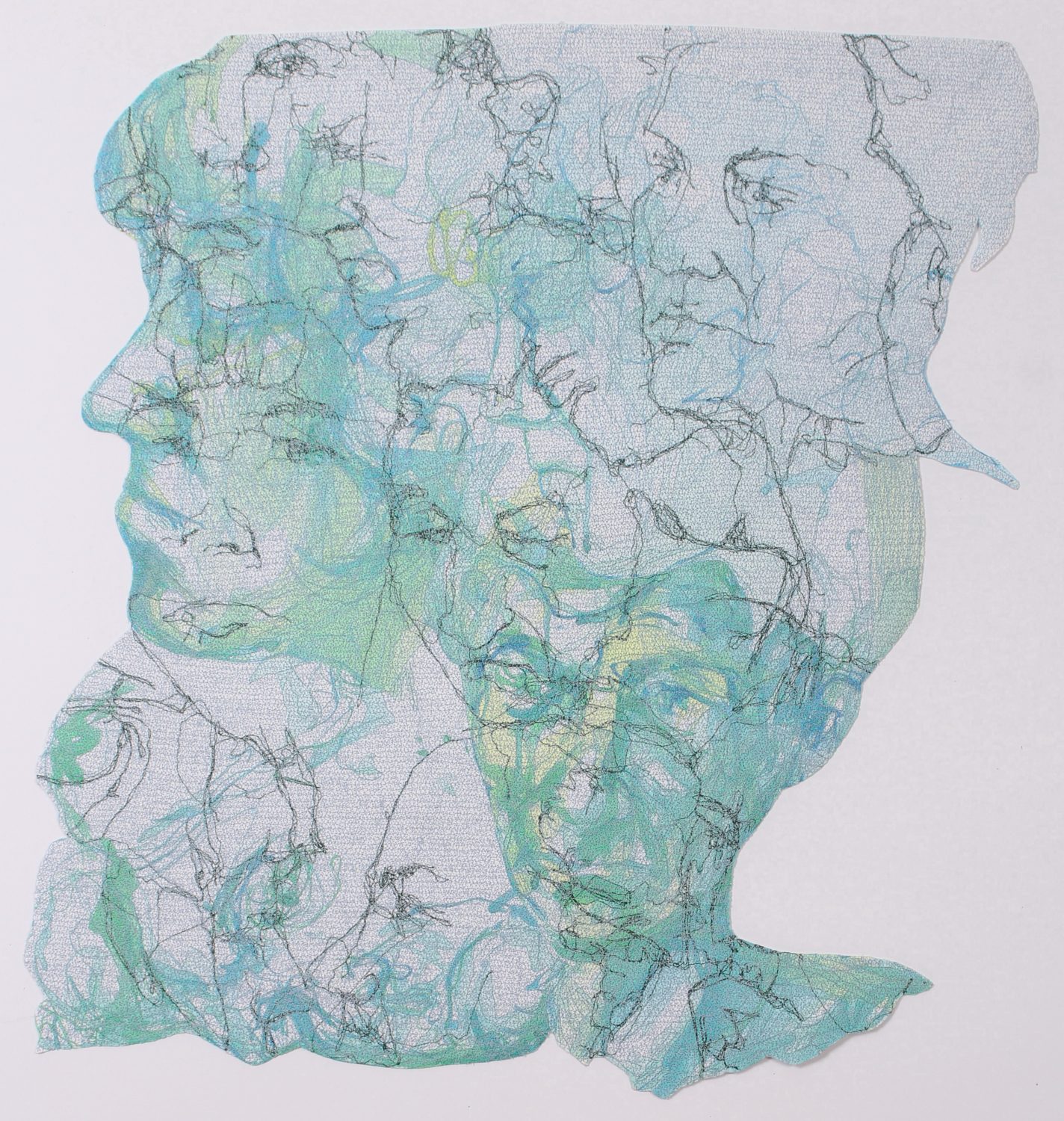Louisa Hammond is a textile artist based in Manchester, UK.

I am a visual artist working mostly with textiles. I use cloth and threads to investigate and externalise my ideas into the physical world. I am fascinated by the tactile nature of this medium and its versatility to be worked with in so many ways.
My practice takes on a very explorative and experimental approach. Themes of my work are generated from my everyday experiences and encounters or places I have visited. From observing changes in the moons cycle in a landscape to a chance encounter with a stranger at a bus stop; subjects are often varied given that I find so much inspiring. I prefer not to be narrowed down by one recurring theme. Instead letting life’s events inspire my work in an ever-changing journey.

I am also an Art Facilitator who supports other artists’ practices at Venture Arts. In my role I help provide technical knowledge and help develop their practice. I believe strongly in the social power of creating a supportive community. In 2018 I founded MCR Sew Social a group who meet monthly to stitch on their own textile projects whilst socialising and being inspired by others. As part of the group, I have co-curated two exhibitions, bringing together local artists who work in textiles from across the city of Manchester to celebrate textiles as an art form.
How did your technique evolve?
As a textile artist, I have always been exploring different techniques in textiles. I particularly spent time exploring different techniques on my MA Embroidery course at the Manchester School of Art, where I taught myself about lace making, hairwork and other embroidery techniques.

For many years, I spent a lot of time trying to learn as many textile techniques as possible. I believed that in order to be a tutor I should master techniques to be able to pass along this expertise. In recent years my thoughts on this have reversed, and it’s taken my working with learning disabled artists to unlearn this. I find the artists I work with bypass the idea of learning through methodology or theory. In general, they tend to approach work from a more interest-based and intuitive approach.
I’ve since realised that it isn’t in solely mastering the technique that we become experienced or develop as artists. It is the combination of this with an application of a feeling or idea. And without both, then neither can evolve. Where I am today is attempting to mix both technique and meaning together in my artworks.

Where do you think your creativity is taking you?
The potentially scary thing about being an artist is not knowing where creativity is taking me. Creativity is something that I can’t pin down sadly. I often feel it comes in waves of inspired weeks followed by dry spells of inactivity. We aren’t machines, but flesh and blood with raging hormones and feelings that are unpredictable.
I think if I knew and could plan the future, I think we’d have it all figured out. And I don’t know about you, but I generally don’t like to know the ending of a book before I begin to read it. Who knows where I’ll be this time next year. I find that keeps me on my toes.

I often feel like my artist development is a bit like a sort of dance, flowing from one thing to another. One day I can be inspired by translating a scene from a walk with my partner into stitch. The next, in creating something abstract from my imagination and feelings.
Sometimes I can get lost in the whirlwind of the dance, and other times its time to take a seat and regain my balance. I think where I’m at now is to let the flow lead me and follow my instincts.

What other artists inspire you?
I’ve always been inspired by the practice of Louise Bourgeois, her words “The act of sewing is a process of emotional repair” have rung true with me. And the feeling of humanity in her sculptures which explored the relationship with cloth that we all have so closely. I’ve always been inspired by work that explores the darker side of the psyche and exploring mental health.
I’m inspired by not only the work but the words of other textile artists such as Ruth Singer and Claire Wellesley-Smith. I enjoy listening to other artists talk about textiles and their processes. I found the podcast series “Making Meaning” by Ruth Singer helped me think about my own practice. In an episode with Claire Wellesley-Smith I empathised with her and Ruth’s discussion about comparing their experiences as both practicing artists and art facilitators. I resonated with their sharing of how these different roles crossed over for them.
Hearing other makers talk about their life as artists can often be just as inspiring, as seeing and experiencing artwork in the flesh. I’ve always been deeply inspired by the artwork of Frank Auerbach, a painter who mostly worked with densely applied oil paint on canvas. I admire the drama in his practice and the way seeing his worked stirred up emotion in me. I remember the first time I saw one of his charcoal drawings of a figure at the Whitworth Art Gallery as young student. I recall the power it had over me and a developing a feeling of awe. The image of the ghostly figure and the layers of torn paper have always stayed with me imprinted in my mind. It was “Head of E.O.W” 1960.

What is your favourite tool to use in your practice?
If I had to be pinned down to just one, I’d say quite simply, the humble but ever so powerful sewing needle is my most favourite tool. It is my mark making tool, and my pencil. It carves and pierces its way through the fabric I choose to embellish, without it I’d simply be lost.
I say it’s like an artist’s pencil, but it can transcend two dimensions. Joined with a thread it has the potential to make a mark in whatever space I wish it to. I think quite sculpturally and this quality of being able to switch between two and three dimensions is what has attracted me to the humble needle.

Can you share one creative tip with our readers?
If I could share one creative tip it would be to stay connected with other makers. Join a studio or create a network of peers who work in a similar field. This can be online or in person.
Leaving university, I found it difficult to regain that element of conversation and discussion around art practice. Some of my best conversations are with artists who don’t necessarily work in textiles, so don’t feel limited by the medium you work in either.
In order to create a supportive environment, I created a monthly stitch group called MCR Sew Social after leaving studying my MA. The group provides a chance to meet, connect and exhibit with like-minded people. Perhaps look for something similar in your area or why not reach out to other local makers and create your own.

You can follow Louisa Hammond on Instagram, and if you’re near the area, tap into MCR Sew Social as well!





